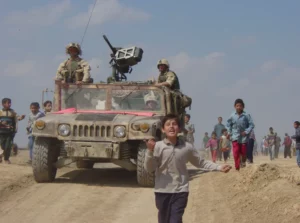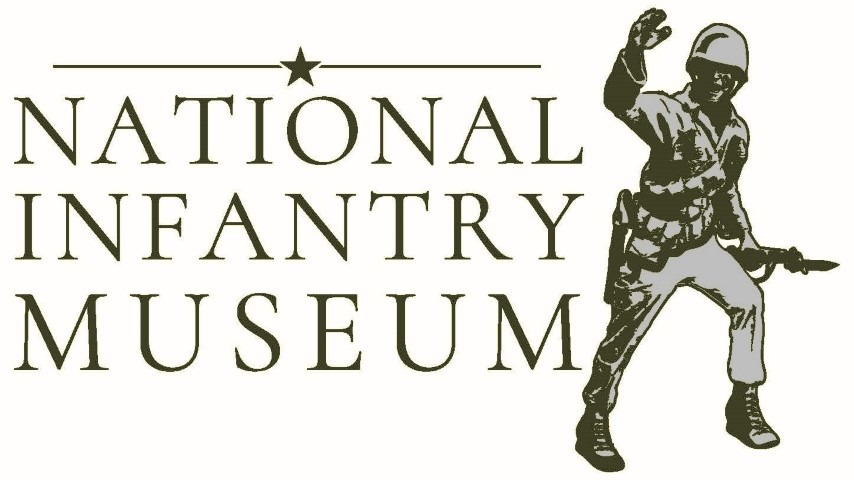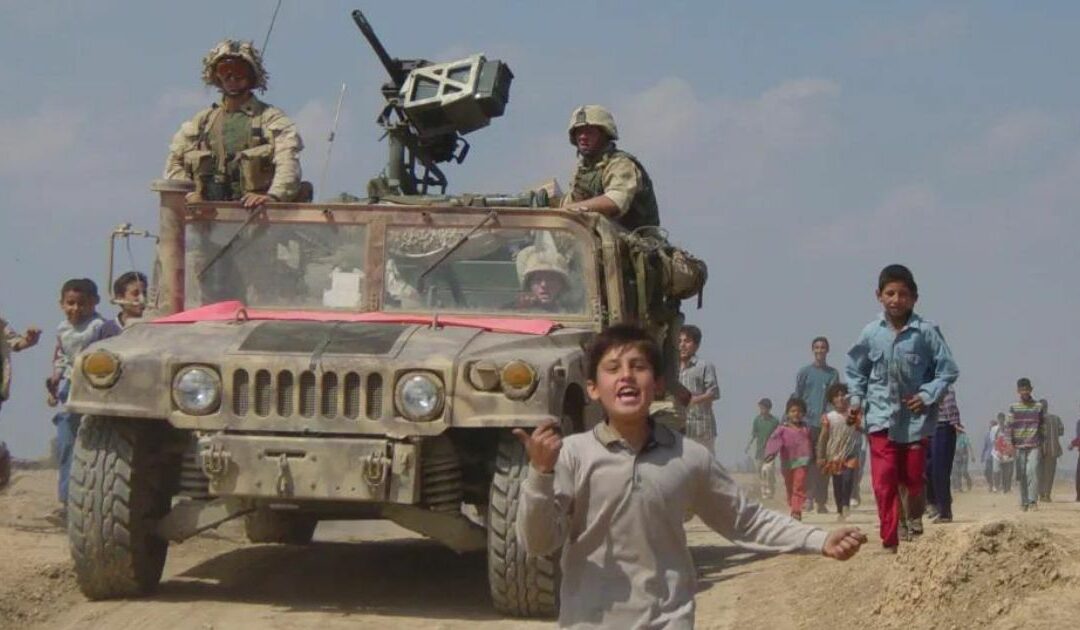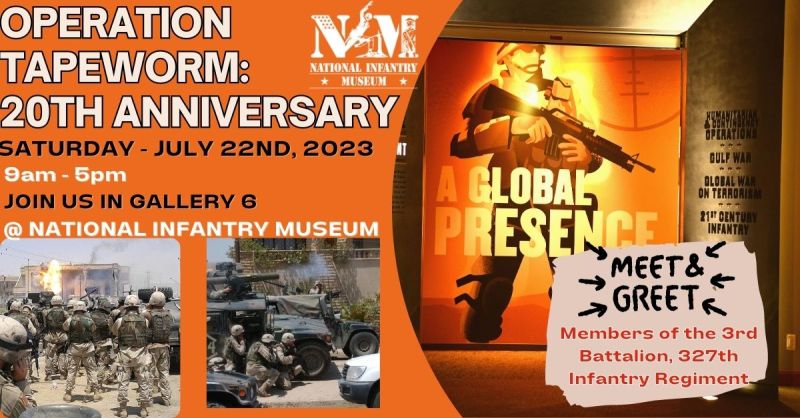Uday and Qusay Hussein, the sons of deposed Iraqi President Saddam Hussein, met their demise during a military operation carried out by American forces on July 22, 2003, in Mosul, Iraq. Originally intended as an attempt to apprehend them, the operation escalated into a four-hour firefight outside a heavily fortified safehouse. Tragically, it resulted in the fatal outcome for both brothers, as well as Qusay’s son Mustafa and their loyal bodyguard Abdul Samad al-Hadushi.
In March and April 2003, a military coalition led by the United States executed an invasion of Iraq that resulted in the overthrow of Saddam Hussein’s Ba’athist government. Following the defeat of the Iraqi Army, Saddam and his sons Uday and Qusay went into hiding, becoming wanted fugitives pursued by occupying Coalition forces. Uday had been instrumental in creating and leading the Fedayeen Saddam – a paramilitary organization dedicated to safeguarding Saddam Hussein personally. Meanwhile, Qusay held a prominent role within the ranks of the Iraqi Republican Guard.
The Coalition’s search for these high-profile fugitives was aided by playing cards featuring their faces with Uday represented as the ace of clubs and Qusay as the ace of hearts. These cards played a crucial role in informing troops about key targets during operations. Furthermore, Coalition authorities offered rewards amounting to $30 million for any information leading to their capture or whereabouts.
On the night of Monday, July 21, 2003, Nawaf al-Zaidan, a businessman closely connected to Saddam’s family, made the courageous decision to turn in Uday and Qusay Hussein. Al-Zaidan had been sheltering them along with their bodyguard in his mansion in Mosul for approximately three weeks. Recognizing the combined $30 million reward at stake, he went to a nearby US Coalition base belonging to the 101st Airborne.
 During his interview with American military intelligence, al-Zaidan displayed a mixture of nerves and confidence. He provided detailed information about the exact locations of Uday and Qusay, as well as accurate descriptions of their appearances and habits. Furthermore, he successfully passed a lie detector test. This valuable information prompted US forces to send a detachment from Task Force 121 along with infantrymen from the 101st Airborne Division.
During his interview with American military intelligence, al-Zaidan displayed a mixture of nerves and confidence. He provided detailed information about the exact locations of Uday and Qusay, as well as accurate descriptions of their appearances and habits. Furthermore, he successfully passed a lie detector test. This valuable information prompted US forces to send a detachment from Task Force 121 along with infantrymen from the 101st Airborne Division.
At around 10:00 AM on Tuesday, July 22nd, 2003, these brave soldiers surrounded the safehouse where Uday and Qusay were hiding. Despite using a bullhorn to demand their surrender, there was no response from inside the house.
Ten minutes had passed when a team of eight highly trained US Special Forces operatives approached the residence and politely knocked on the door. Regrettably, there was no response from inside, prompting the soldiers to breach the entrance in a highly professional manner. With great precision, they made their way into the house only to be met with intense gunfire from the defenders armed with AK-47s, who had taken cover on the second floor. Despite valiant efforts, three Special Forces soldiers were wounded during this encounter inside the building. Meanwhile, as they attempted to retreat, the occupants rained bullets upon them through windows, resulting in yet another soldier being injured. Swiftly recognizing the gravity of the situation, a helicopter was summoned to evacuate all four injured operatives while their comrades strategically withdrew from the premises and called for backup.
 Not long after their withdrawal from the house, additional troops from both the 101st Airborne Division and 3/327th Infantry surrounded the safehouse. They unleashed a barrage of firepower using Mk 19 grenade launchers, AT4 rockets, Humvee-mounted .50-caliber M2 Browning machine guns – intensifying an already fiery battle. Remarkably by 11:22 AM– merely sixty minutes into this relentless firefight– over two hundred reinforcement soldiers had joined forces with remarkable cohesion in order to bolster and augment our steadfast task force.
Not long after their withdrawal from the house, additional troops from both the 101st Airborne Division and 3/327th Infantry surrounded the safehouse. They unleashed a barrage of firepower using Mk 19 grenade launchers, AT4 rockets, Humvee-mounted .50-caliber M2 Browning machine guns – intensifying an already fiery battle. Remarkably by 11:22 AM– merely sixty minutes into this relentless firefight– over two hundred reinforcement soldiers had joined forces with remarkable cohesion in order to bolster and augment our steadfast task force.
At 11:45 AM, a group of Kiowa OH-58D army helicopters arrived at the safehouse and commenced an attack, using machine gun rounds and rockets to devastate a large portion of the building. Despite the aggressive response, the task force encountered fierce resistance from the occupants of the house, who launched grenades from the rooftop and continued firing upon them. Recognizing the need for a more decisive action, there was initial consideration of deploying Apache helicopters to eliminate the safehouse, but this option was discarded due to concerns about potential harm to innocent civilians.
By 1:00 PM, three hours into the operation, ten TOW missiles were launched at the house from Humvee-mounted launchers. The resulting explosion reduced much of the safehouse to rubble. At 1:21 PM, American soldiers entered what remained of the destroyed structure in search of survivors. It was during this search that Uday and Qusay’s lifeless bodies were discovered. As soldiers ascended the stairs leading to the second floor of the building, they were unexpectedly met with gunfire from Qusay’s 14-year-old son Mustafa who had sought cover in one of its bedrooms. Tragically, Mustafa was fatally wounded by retaliatory fire.
After completing their mission at the safehouse compound, all four individuals’ remains were respectfully removed from premises and transported by air to Baghdad for further identification tests. Skilled morticians worked diligently to reconstruct Qusay and Uday Hussein’s bodies as both men had gone through significant changes in appearance in order to evade detection; Uday had completely shaved his head while Qusay had trimmed his recognizable beard.









Why is the death of the Hussein brothers described as “tragic”?
I believe it is in reference to the 14 year old boy that was killed.
There was also a squad of military police from Fort Bragg that was stacked on the door and extracted one of the TF121 members, but it was quickly changed to read infantrymen from the 101st ABN Div